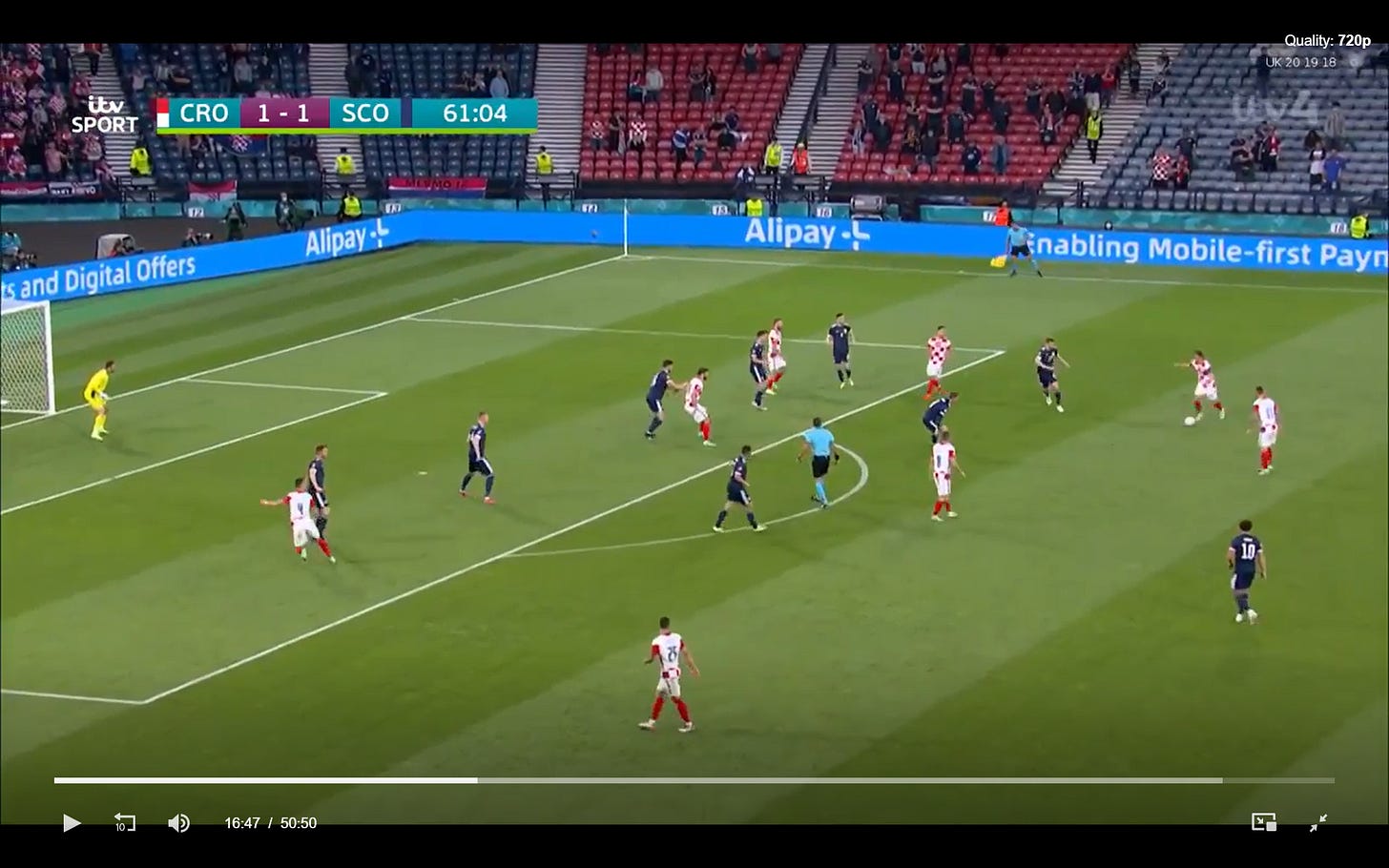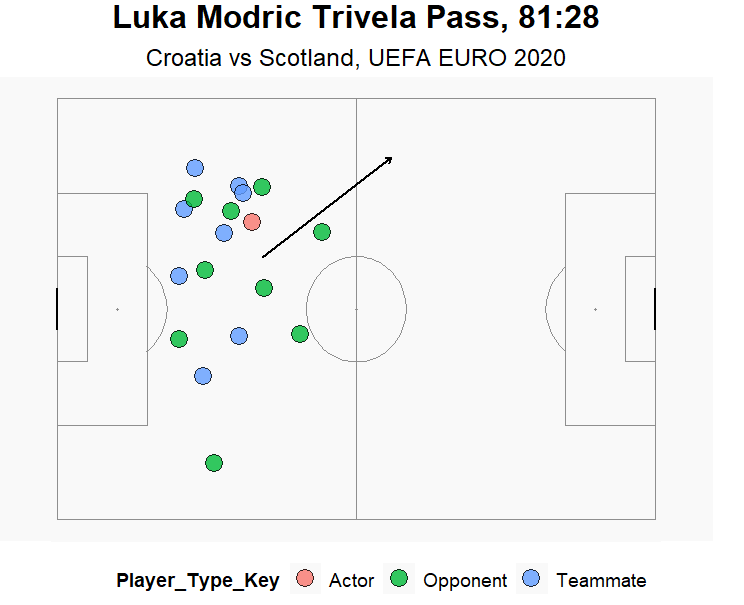The Data Behind Luka Modrić's Trivela Pass
What the numbers say about the Croatian's technique
The trivela pass is one of the most beautiful things in football. When it’s done right, it is very satisfying to watch.
I used trivela passes a lot when I played, and I can say that there is almost nothing better than the feeling of the ball leaving your foot after you’ve hit it well.
If you are unfamiliar with what the trivela pass is, I highly recommend watching this video.
This post is going to look at Luka Modrić, who is probably the best trivela passer of all time.
Not Everyone’s a Fan
Despite being a popular and highlight reel worthy technique, not everyone likes trivela passes. And some of the biggest detractors are in the coaching community.
As a player, I had a coach threaten to take me out of the game if I kept using trivela passes. An NWSL coach once told me that I needed to make “NWSL passes” with the inside of the foot and not passes with the outside of the foot.
Former Real Madrid manager Rafa Benitez famously told Modrić that he needed to stop passing with the outside of his foot (which he denies telling Modrić to do so).
Everyone is entitled to their likes and dislikes but telling players to stop using a skill (especially if the skill is performed at a world class level) is not something I understand.
The point of this post isn’t to diminish the art of the trivela to numbers or justify Modrić’s use of the technique.
The goal is to give context to the pass and hopefully encourage its use.
Line Breaking Passes
The data I looked at was Statsbomb’s 360 Data from the 2020 Men’s Euro. I wanted to see how many of Modrić’s line breaking passes were trivela passes.
Statsbomb defines a line breaking pass as completed pass that moves the ball at least 10% closer to the opposition goal and that intersects a pair of defenders in close proximity or passes behind the line of defenders.
Under those criteria, Modrić had 23 line breaking passes at the Euro had 5.1 line breaking passes per 90.
Of those passes, 5 of them were trivela passes and he had 1 line breaking trivela pass per 90.
Modrić is so comfortable with the trivela technique that it shows up in metrics such as line breaking passes.
There are, however, in game situations that players would benefit from using the trivela.
Small Wind Up
The trivela pass naturally has a small wind up. This can be helpful in situations where quick passes are needed or when trying to catch defenders off guard.
The image below shows Modrić’s wind up right as he was about to attempt a trivela pass.
His body was upright, his eyes were looking up, and his wind up looked as if it could be a part of his stride. He was able to find his teammate with a line breaking pass.
Below is what the frame looks like in Statbomb’s 360 Data.
The small wind up can be useful in attacking areas where a player wants to hide his or her intentions in order to get closer to goal or perform an action on goal.
In the image below, Modrić received the ball in the attacking third. The ball was on his left side, so he feints a shot or pass with his left.
In the next image, the ball was more towards the middle of his body, and he used a trivela pass to curve the ball into his teammate (#25).
Because he didn’t wind up with his left, defenders may not have recognized that he was about to play a ball around their defensive overload in the heat of the moment.
Transition Moments
Another feature of the trivela technique is that when it’s being struck, the ball is to the middle or left side of your body. The placement of the ball is such that you could pass the ball with the left foot or use a trivela pass.
Transitions are some of the quickest moments in the game, and every action can determine its success.
Let’s say a ball comes into you at pace and you use your right foot to trap it. Instead of having to put your right foot down and then wind up with your left to kick a pass to a teammate, you can use a trivela pass and do the trap and pass without using that gather step.
Below are the 360 Data frames of Modrić’s trivelas during transition moments.
Conclusion
Football is becoming increasingly efficient and smarter with the use of video and data. I personally think it is a good thing for the game.
However, we must find the balance between the efficiency and the systems of the game and encouraging and appreciating the art players can produce.
Photo: @theMadridZone on Twitter







